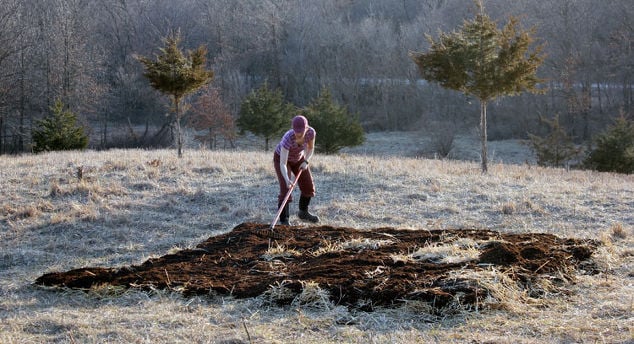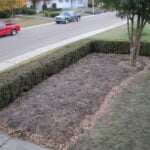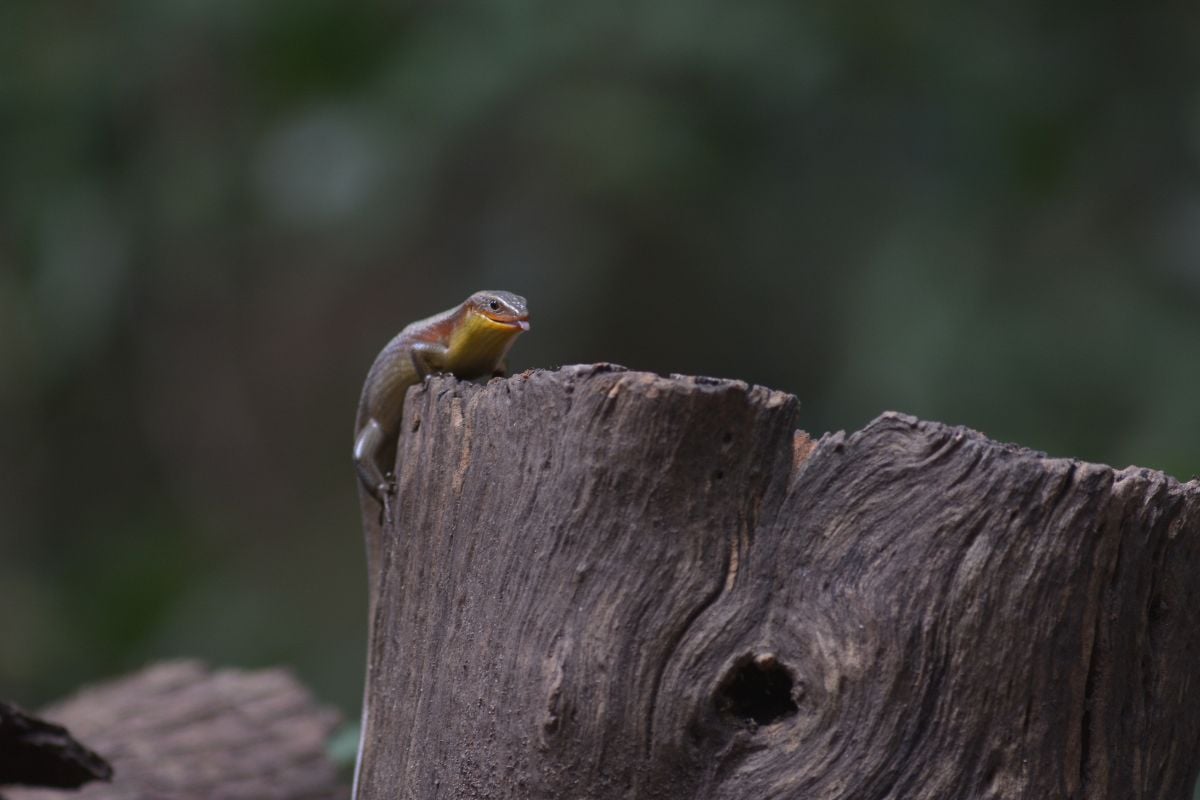 Upon reading the title, you would probably start thinking about a compost pile that creates ready-made lasagna or produces lasagna ingredients. Well, you’re absolutely wrong with at least the former assumption. Lasagna composting or sheet composting is a horticultural method deriving its name from the process and style of layering your compost. It may sound appetizing but it’s basically a procedure that helps establish a new garden bed with the richest of soil, that’s where the assumption that it produces lasagna ingredients is partially true. Lasagna composting is an organic gardening method that helps save time. Imagine all the benefits of composting with almost none of the work. Lasagna composting involves spreading all the materials directly on the garden in layers thin enough that they break down on their own with no watering or turning. How wonderful!
Upon reading the title, you would probably start thinking about a compost pile that creates ready-made lasagna or produces lasagna ingredients. Well, you’re absolutely wrong with at least the former assumption. Lasagna composting or sheet composting is a horticultural method deriving its name from the process and style of layering your compost. It may sound appetizing but it’s basically a procedure that helps establish a new garden bed with the richest of soil, that’s where the assumption that it produces lasagna ingredients is partially true. Lasagna composting is an organic gardening method that helps save time. Imagine all the benefits of composting with almost none of the work. Lasagna composting involves spreading all the materials directly on the garden in layers thin enough that they break down on their own with no watering or turning. How wonderful!
Some things to consider before attempting this type of composting:
- This is an ideal early-fall technique, so you will have optimal soil by spring.
- Lasagna composting takes six months or more, so it’s not a good strategy if you want to plant soon.
- This style of composting isn’t exactly the most attractive way to compost. Most homesteaders won’t care, but if you’re homesteading on a suburban lot with a picky homeowner’s association, you may catch some grief.

Creating a lasagna compost can certainly help save you some time versus traditional composting as it doesn’t require any digging, tilling or removing of sod. It may sound a bit sensational but it’s also quite effective. Organic composting in this manner will require you to just start and put on an initial layer of organics. Your organic materials can be in the form of newspapers or cardboard. These should be placed on top of your new garden bed’s soil. And right after this, you may proceed by watering this specific area. Watering will help keep the layers in position, and to encourage proper decomposition (adding in some topsoil can also speed up the process).
Now, the next few layers ingredients can be taken from either your kitchen or garden wastes. These can be your old coffee grounds, tea leaves and tea bags, seedless weeds, days old manure from plant-eating animals, seaweed, pine needles, crushed eggshells, fruit or vegetable peels, fallen leaves, grass or any other yard trimmings, peat moss and more.
Keep in mind the importance if alternating your lasagna compost’s ‘layers’. It is essential that you alternate the layers of your lasagna plot. You should also be able to fill-in your brown and green materials in between sheets, as these will be your carbon and nitrogen-rich organics. Your ‘browns’ should include: newspaper strips, peat moss, pine needles, and/or fallen leaves. While your ‘greens’ should include grass clippings, vegetable peels, and/or anything that was once growing and hasn’t been processed.
 You can finish your bed by topping it off with at least four inches of topsoil or finished organic compost. Also add in some mulch on top of the bed as a finishing touch (cover the bed with at least 3 inches of mulch). As soon as you’re done creating your new bed, it will then be set for planting anything that you want within the next 6 months. When lasagna gardening, also note that the bed will still settle throughout time since the layers below will be breaking down. Sheet composting has been used by traditional farmers for hundreds of years to restore fertility and manage organic materials. Now that you know how simple it is, go ahead and try lasagna composting for yourself!
You can finish your bed by topping it off with at least four inches of topsoil or finished organic compost. Also add in some mulch on top of the bed as a finishing touch (cover the bed with at least 3 inches of mulch). As soon as you’re done creating your new bed, it will then be set for planting anything that you want within the next 6 months. When lasagna gardening, also note that the bed will still settle throughout time since the layers below will be breaking down. Sheet composting has been used by traditional farmers for hundreds of years to restore fertility and manage organic materials. Now that you know how simple it is, go ahead and try lasagna composting for yourself!









10 thoughts on “Easy Lasagna Composting (Sheet Composting)”
I am looking for a way to keep enough worms for fishing for my family of 6 adults. I need about 60 worms per day. How many worms do I need to purchase? How long do I need to wait after setting up bins before I start harvesting worms? I tired of buying many boxes worms per week just to have fun in my lake full large mouth bass and blue gills.
Composting is just a by product that I can spread in my flower and shrub beds.
Hello and thanks for the blog on sheet composting. I have recently moved to a new construction home and my back yard is a blank canvas. I removed all the tape from the moving boxes (which has minimal print on them) and saved all of the packing paper.
Is it possible to add a certain type of worms to help with this composting process while adding their castings and tunneling through the soil? If so, what would that be and how many of those types or a combination of types should I apply per square foot of sheet composting. Would living under the cardboard keep them cool enough during the summer or warm enough during the winter? I’m in the Dallas/Ft. Worth area of Texas.
I understand the worms stay cool by evaporative cooling. How do they stay warm? I understand the worms prefer 40-80 degree temps, what temperatures do their eggs prefer?
Finally, is there anything, like ants, that like are a foe to worms?
Your website has answered a lot of my questions and has got me thinking of more. Keep up the good work!
In advance, I thank you for your time and response.
I am curious if this method attracts wildlife. I have a variety of it traversing my property during the year, deer, bear, elk, small animals, etc. I don’t want to attract bears. As Stephen Colbert said, they are mankind’s greatest threat. /s
Hello
Very informative
Thank you
My worm farm is in a shed for summer
Should I move it out of the shed for the autumn/ winter sun
Or could it be that the wind would be too cold for the worm farm
Your thoughts please
Hi! Yes. A lasagna patch will attract wildlife. Here inCT I would cover items w dirt or straw or better still…Try a honey pit. I dug a 2’ deep hole along the deck (where the soil was poor)and placed a half sheet of plywood over it. Screwed hinges to a frame and the plywood. Put a hook/eye pulley to the unhinged side…to which I put a rope so that I could open it from the deck.and.drop in food scraps..and close it again. Made a beautiful spot for a garden the next spring.
Why can’t I see replies to these questions
Hello Jim;
Thank you for your question. We are not always on here but do try to get on to answer questions and help our customers. if you need immediate attention, it is best to contact our Customer Service Department.
Uncle Jim’s Worm Farm
I’m in a wheelchair, I use a power chair because it’s easy to maneuver and power turning.
That said I compost on the ground. The way my dad did in Fla. I’m in South Carolina. My worms were doing good until I pulled the plastic back and saw that my mound was a huge Fire ant mound.
I lost a lot but its coming back. Not sure about the red wigglers but something is happening again and its going down to 10°. I’ll see again.
I have a worm compost bin that i make castings with. 1 pound of Jims worms and 1 pound of blended vegs every week. Tons of castings. That Jim!!
Hello and thank you for your comment. For Fire Ants, you can use Diatomaceous Earth in a dusting over the top of the soil/mound and that will get rid of them. After they are gone, you may need to add more worms, or perhaps there is enough left to begin again.
Uncle Jim’s Worm Farm
I’ve just released 2 dozen red wigglers in a 18 by 18 by 10 inch deep box of chopped dead leaves mixed with totally rotted leaves and soil. Moisten it with rain water.
The worms dug themselves down right away.
Question When what and how much to feed ?